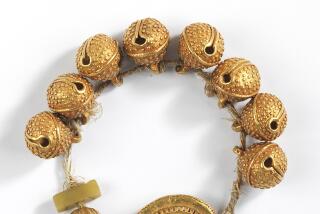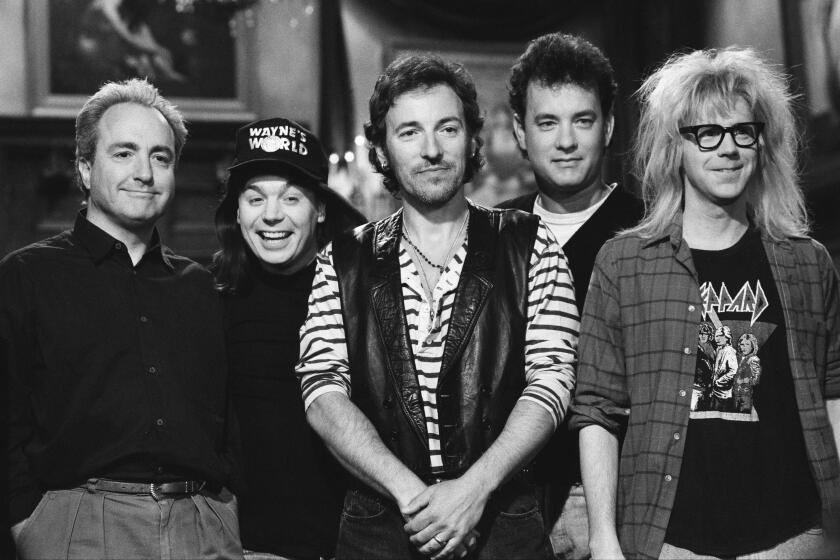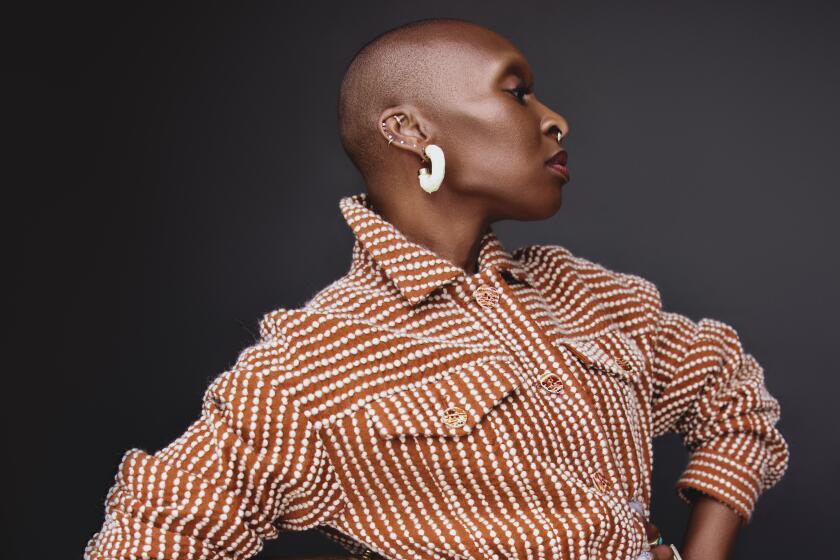Shaw’s Fair Legacy--Hijacked? : Bequest: The legendary writer willed his royalties to the British Library. But a technicality is keeping the two apart.
- Share via
LONDON — George Bernard Shaw steadfastly rejected all attempts to transform his play “Pygmalion” into a musical, insisting that his comedy on the English class system would be set tomusic over his dead body.
It was. Six years after his death in 1950, “My Fair Lady” hit the Broadway stage and was soon followed by the classic Hollywood film.
For the record:
12:00 a.m. July 21, 1993 For the Record
Los Angeles Times Wednesday July 21, 1993 Home Edition View Part E Page 3 Column 6 View Desk 1 inches; 21 words Type of Material: Correction
Incorrect identification--A photo of actor Ian McKellan portraying George Bernard Shaw was misidentified in some editions of Wednesday’s View.
Now it appears the musical transformation of “Pygmalion” was neither the only, nor the largest, posthumous indignity for the Irish dramatist, critic and political activist.
More than 40 years after Shaw’s death, it has emerged that he has been thwarted in his plans to leave a sizable portion of his royalties to the British Library, where he spent his early, impoverished years working in the institution’s magnificent Reading Room.
Since his death, Shaw’s works have earned millions of dollars. Much of it was derived, ironically (and Shaw was a master of irony), from the royalties of “My Fair Lady.” But because of a technicality in the way Shaw wrote his will, a technicality he could not have foreseen, the library has received only a fraction of what it might otherwise have been granted.
This new revelation has resulted in an erudite imbroglio among Britain’s intellectual elite, pitting many of the nation’s greatest writers and thinkers against one of the foremost cultural institutions in the world--the British Museum.
The museum, say the angry Shavians, has taken the library’s money. And they want whatever is salvageable returned.
The problem is that when Shaw made out his will, just before his death at 94, the British Library was a part of the British Museum. It wasn’t until 1973 that the library became a separate entity.
Shaw willed a third of the income from his work to the National Gallery of Ireland, a third to the Royal Academy of Dramatic Art in Britain and a third to the British Museum “in acknowledgment of the incalculable value to me of my daily resort to the Reading Room.”
As a result of that wording, the one-third share that Shaw seems to have designated for the library has gone to the museum. It is estimated that the museum has received $5.6 million over the past four decades, which converted to contemporary terms equals about $23 million. If the money has been placed in a capital fund and invested, it could be worth far more.
The issue resurfaced about 18 months ago with the British publication of volume five of Michael Holroyd’s Shaw biography, “The Last Laugh: An Epilogue 1950-1991.” (The book was published as volume four in the U.S. in May by Random House.)
Holroyd discovered during his research that, despite the early governmental assurances that Shaw’s wishes would be carried out, they were not.
“It came as a complete surprise to me,” says Holroyd, who has spent 17 years working on his Shaw biography. “And I believe it came as an embarrassment to the museum.”
Exactly what the museum has done with the money, and how much is left, remains unclear.
Under pressure to explain its handling of the Shaw bequest, the British Museum has said only that it has used the income to improve its galleries and has given $720,000 to the British Library for assistance with important purchases.
“The money that’s gone is gone,” says theater and broadcast veteran Jack Emery, who has galvanized support for Shaw’s wishes with his production of a television program, “Mister Shaw’s Missing Millions.”
Says Emery, “If there’s any money in the British Museum Shaw Fund, or, indeed, if a British Museum Shaw Fund exists, that money should be transferred to the British Library. And at the same time, all royalties from now until the year 2000 (when Shaw’s copyrights expire) that would be going to the British Museum, should be going to the British Library.
“No one is suggesting that anything illegal has been done,” says Emery. “What we are suggesting is that the law has been used to completely subvert what were obviously Bernard Shaw’s intentions.”
Shaw left the administration of his estate in the hands of the government public trustee. While there has been some criticism about the way that office handled the will, the current public trustee says there was no alternative.
“My predecessor had to hand the British Museum their share of the money, but was not in any way able to control how the museum handled the money,” says public trustee Peter Farmer.
Farmer says the museum and the other Shaw beneficiaries now receive their royalty payments directly, so his office has no record of how much they earn from the bequest.
Neither the British Museum nor the British Library would discuss the matter. A museum spokesman read a statement saying the institution was under no obligation to give the library any of the Shaw funds, but had provided some assistance for “12 important purchases.”
A British Library spokesman declined comment, saying, “We don’t want to get into a public debate with the museum on this.”
Says author Holroyd, “I think the library has been too feeble and the museum has been too greedy.”
With the publication of his book, the issue “began to have a head of steam on it,” Holroyd says. And the broadcast of Emery’s program a few weeks ago has turned it into a cause celebre in British literary circles.
One angry letter to the Times of London recently was signed by a list of luminaries including Harold Pinter, Lady Antonia Fraser and Melvyn Bragg.
In the half-hour television program, Shaw, played with an uncanny resemblance by Sir Ian McKellen, returns to present-day London to find out how his benefactors are faring with his money. He is in for a series of shocks.
One of the first comes when he gets into a taxi and discovers that the catchy tune his cabby is singing is “Wouldn’t It Be Loverly” from “My Fair Lady,” his transformed “Pygmalion.”
Will Hutton, economics editor of The Guardian newspaper, appears on the program as himself and tells Shaw that it is unclear what the museum has done with its share of his money, but that if the museum trustees had invested it wisely--which does not appear to be the case--it would be worth up to $110 million today, possibly more.
And if all the money from Shaw’s royalties had been kept together for investment, with the income from the fund then distributed to the three beneficiaries, it would have amounted to an incredible sum, says Hutton.
“As you sit here today,” Hutton tells Shaw, “those funds, in my view, would be worth three hundred or four hundred million pounds ($480 or $640 million) and there would be a Shaw Trust, a real power in Britain, distributing money to the British Museum and the British Library on a fantastic scale.”
Prevented from filming in the Reading Room, Emery, who wrote and produced the program, created a scene in which Shaw addresses the British Museum from beyond its gates. Facing the august building, he picks up a megaphone and shouts, “Can you hear me? This is Bernard Shaw. I am a Library man, not a Museum man. I detest fossils, I love books. Dispute my will, divert my money, but let there be no doubt I loved the Reading Room.”
Based on the success of the program, Emery is now in talks with American broadcasters to create a longer version for U.S. viewers. While incorporating the issue of Shaw’s will, the new program would provide more background and have the playwright travel to America. “I think he might hold a press conference and go on an American chat show,” says Emery.
The issue of Shaw’s will might not be so important if the British Library, one of the world’s foremost research facilities and a repository for every book, periodical and newspaper published in Britain, was itself a wealthy institution. But that is hardly the case.
A British Library headquarters is under construction not far from the old site in central London. The project has been beset by delays and financial crisis. It has gone over budget, with its cost now estimated at $720 million. As a result, its size and scope have been reduced.
There are fears that when the new library opens--latest projections are for Spring 1995--it already will be obsolete.
Could Shaw’s legacy make a difference?
“There’s no doubt it would affect the library’s collection of holdings and manuscripts and the size of its staff,” says Holroyd. “They’ve undergone all sorts of cuts.”
Adds Emery, “I believe there will be only a few more seats in the new reading area than there were in the old one. And it’s going to be absolutely swamped. When Shaw went there, a penniless unknown, an almost destitute would-be writer, he worked in the Reading Room for a matter of years, almost daily.
“I would like to think that the new British Library could cope with at least some Shaws or potential Shaws.”
More to Read
The biggest entertainment stories
Get our big stories about Hollywood, film, television, music, arts, culture and more right in your inbox as soon as they publish.
You may occasionally receive promotional content from the Los Angeles Times.









